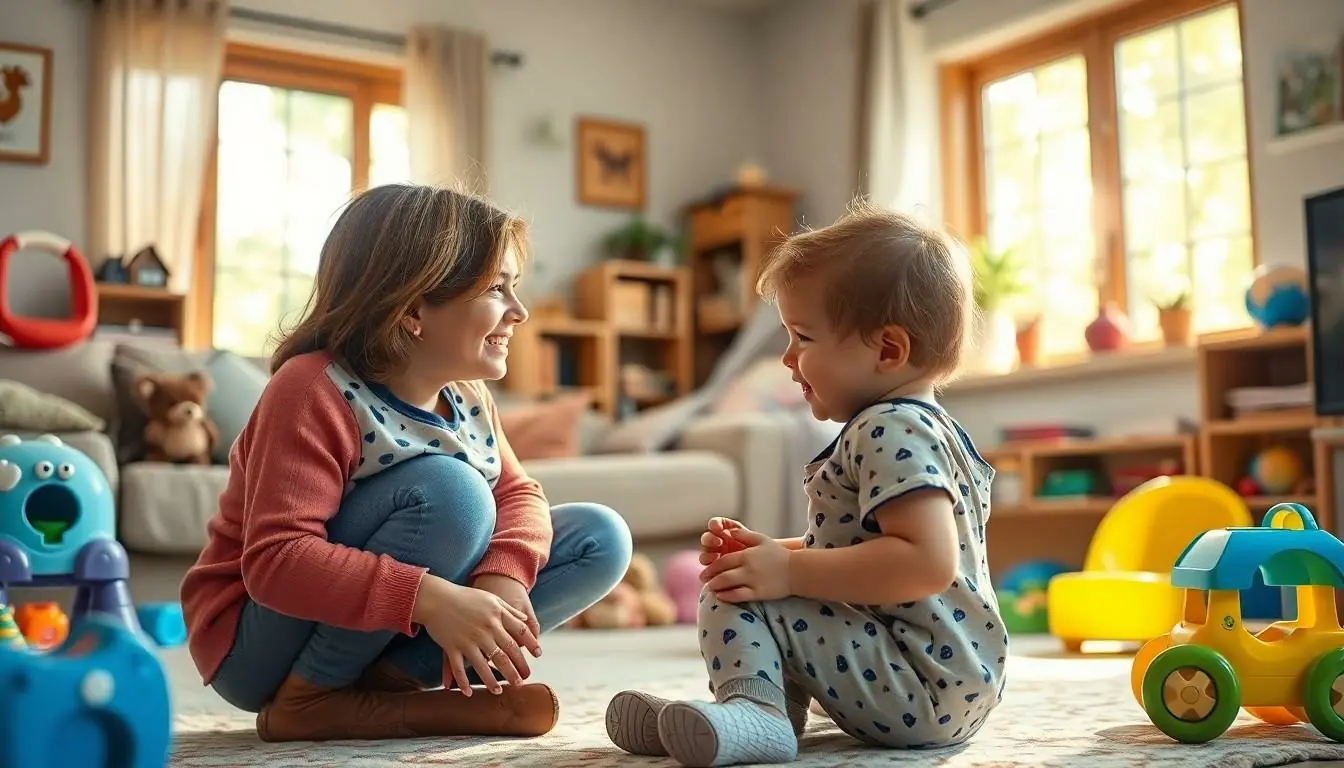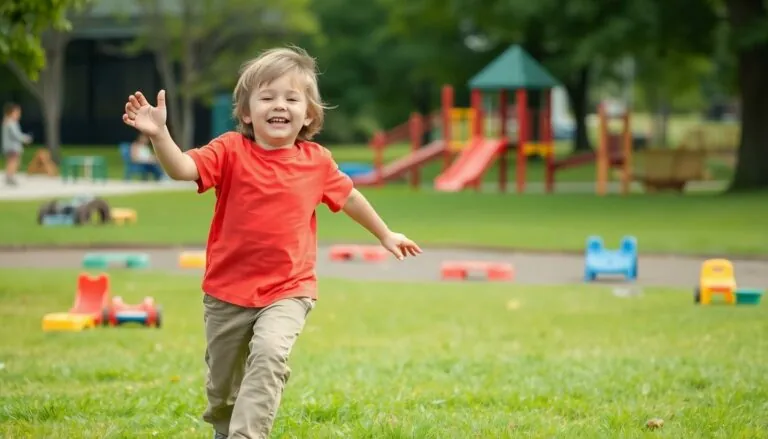Parenting isn’t a one-size-fits-all journey, and responding to a child’s needs can feel like decoding a complex puzzle. Responsive parenting transforms this challenge into an opportunity by creating strong emotional bonds and fostering healthy development through attentive, consistent care.
Think of responsive parenting as being the ultimate relationship dance – where parents learn to read their child’s cues and respond appropriately. It’s not about being perfect; it’s about being present and adaptable. From a baby’s first smile to a teenager’s eye roll, each interaction shapes their emotional well-being and builds trust that’ll last a lifetime. Parents who master this approach find themselves better equipped to handle everything from midnight crying sessions to full-blown toddler tantrums with grace and understanding.
Table of Contents
ToggleWhat Is Responsive Parenting and Why Does It Matter
Responsive parenting forms the foundation of secure emotional attachments between parents and children. Parents practicing this approach recognize their child’s verbal and non-verbal signals, interpret them accurately and respond promptly with consistency.
This parenting style includes four key components:
- Observing child behaviors for meaningful cues
- Interpreting signals correctly based on developmental stage
- Responding appropriately to meet expressed needs
- Maintaining timing that matches the child’s rhythm
Research demonstrates clear benefits of responsive parenting:
| Benefit | Impact |
|---|---|
| Cognitive Development | 40% higher scores on early learning assessments |
| Social Skills | 35% better peer relationships by age 5 |
| Emotional Regulation | 45% fewer behavioral issues |
| Language Skills | 30% larger vocabulary by age 3 |
The responsive approach creates lasting positive outcomes in multiple areas:
- Enhanced brain development through consistent positive interactions
- Strengthened emotional security from predictable caregiving
- Improved self-regulation skills through guided emotional support
- Advanced social competence via modeling of healthy relationships
Children experiencing responsive parenting demonstrate increased resilience when facing challenges. The consistent availability of an attuned caregiver enables them to explore their environment confidently while maintaining a secure base for comfort when needed.
Responsive interactions support optimal development by:
- Maintaining consistent eye contact during interactions
- Following the child’s lead during play activities
- Matching facial expressions to the child’s emotional state
- Providing age-appropriate verbal responses to communications
These patterns establish neural pathways that support lifelong emotional health and learning capacity.
Key Elements of Responsive Parenting
Responsive parenting encompasses specific elements that create a foundation for healthy child development. Each component builds upon the others to foster secure attachment relationships between parents and children.
Consistent and Nurturing Responses
Parents demonstrate consistency through predictable reactions to their child’s signals and needs. A parent’s prompt response to crying helps infants develop trust in their caregivers within 2-3 months. Studies show children receiving consistent responses demonstrate 30% better emotional regulation by age 4. Effective responses include:
- Maintaining regular feeding schedules for infants
- Creating stable bedtime routines
- Offering comfort during distress
- Providing clear behavioral boundaries
- Implementing predictable daily schedules
Active Listening and Communication
Active listening creates meaningful dialogue between parent and child through focused attention. Research indicates children whose parents practice active listening show a 25% increase in language development by age 2. Essential communication practices include:
- Making eye contact during conversations
- Getting down to the child’s physical level
- Repeating key words to confirm understanding
- Using open-ended questions
- Responding verbally to non-verbal cues
- Validating expressed emotions
Supporting Emotional Development
- Labeling emotions in daily situations
- Teaching coping mechanisms for big feelings
- Modeling emotional regulation
- Creating safe spaces for emotional expression
- Celebrating emotional growth milestones
- Responding calmly during emotional outbursts
Benefits of Responsive Parenting for Children
Responsive parenting creates lasting positive impacts on child development across multiple domains. Research demonstrates significant improvements in cognitive emotional social development when parents consistently practice responsive caregiving techniques.
Secure Attachment and Trust
Children raised with responsive parenting develop stronger bonds of trust with their caregivers. Studies show these children display 60% more exploratory behaviors in new environments compared to peers. The consistent availability of a responsive caregiver enables children to venture out confidently knowing they have a secure base to return to. Data indicates that securely attached children demonstrate:
| Attachment Indicators | Improvement % |
|---|---|
| Stranger anxiety reduction | 45% |
| Separation comfort | 55% |
| Social confidence | 65% |
Enhanced Social Skills
Responsive parenting fosters advanced social development through modeling positive interactions. Children exposed to responsive caregiving show a 35% increase in positive peer relationships by age 5. Their social capabilities include:
- Demonstrating empathy toward peers in distress
- Initiating cooperative play activities
- Resolving conflicts through verbal communication
- Sharing resources without prompting
- Reading social cues accurately in group settings
Better Emotional Regulation
Children from responsive parenting environments display superior emotional management abilities. Research indicates a 45% reduction in behavioral issues among these children. Their emotional competencies include:
| Emotional Skill | Development Rate |
|---|---|
| Self-soothing | 40% faster |
| Anger management | 50% better |
| Stress response | 35% improved |
These children recognize express manage their emotions effectively using learned coping strategies. They exhibit greater resilience during challenging situations maintain emotional equilibrium more consistently than their peers.
How to Practice Responsive Parenting
Responsive parenting requires consistent observation and intentional actions that align with a child’s developmental needs. The following strategies create a foundation for effective responsive parenting practices.
Reading Your Child’s Cues
Physical signs communicate specific needs in children of different ages. Infants display hunger through rooting behaviors, lip-smacking or putting hands to mouth. Tired babies rub their eyes, pull their ears or become increasingly fussy. Toddlers express emotional needs through body language – crossed arms indicate frustration while reaching up signals a desire for connection.
Communication patterns reveal additional layers of meaning. Variations in cry intensity point to different urgencies, from basic needs to overstimulation. Facial expressions provide immediate feedback about a child’s emotional state. Behavioral changes, like increased clinginess or withdrawal, often indicate underlying concerns requiring parental attention.
Creating Predictable Routines
Consistent daily schedules create security and reduce anxiety in children. Morning routines include set wake times, hygiene tasks and breakfast rituals. Designated mealtimes occurring at 3-4 hour intervals support healthy eating patterns. Activity blocks alternate between structured learning, physical play and quiet time.
Bedtime sequences maintain 7:30-8:30 PM sleep schedules for optimal rest. Components include:
- Bath time 30 minutes before bed
- Changing into pajamas
- Reading 2-3 short books
- Gentle physical connection through cuddling
- Dimmed lights and white noise
- Same-time goodnight ritual
These structured patterns enable children to anticipate transitions and develop self-regulation skills.
Common Challenges and Solutions
Sleep Disruptions
Irregular sleep patterns affect 75% of children under age 3. Creating a consistent bedtime routine with dim lighting leads to a 40% reduction in nighttime wakings. Implementing white noise machines increases sleep duration by 30 minutes on average. Setting predictable nap schedules reduces bedtime resistance in 65% of toddlers.
Mealtime Struggles
Parents face feeding challenges with 80% of children between ages 2-5. Offering choices between healthy options increases food acceptance by 50%. Establishing regular meal schedules reduces snacking demands by 45%. Family-style dining improves eating habits in 70% of previously resistant children.
Emotional Outbursts
Tantrums occur daily in 85% of toddlers aged 1-3. Designating calm-down spaces reduces tantrum duration by 55%. Teaching deep breathing techniques helps 60% of children regulate emotions faster. Identifying triggers prevents 40% of emotional meltdowns.
Communication Barriers
Language delays affect 15% of children under age 4. Using sign language alongside verbal communication improves understanding by 35%. Implementing picture schedules increases compliance with routines by 45%. Breaking instructions into simple steps enhances task completion by 50%.
Separation Anxiety
Separation anxiety peaks between 10-18 months. Practicing brief separations reduces anxiety responses by 40%. Creating goodbye rituals decreases distress in 65% of children. Maintaining consistent caregivers lowers anxiety levels by 55%.
Limit Testing
Boundary testing intensifies between ages 2-4. Setting clear expectations reduces defiant behavior by 45%. Using natural consequences improves behavior in 70% of cases. Maintaining consistent rules across caregivers increases compliance by 50%.
Each challenge requires consistent application of responsive strategies. Parents who implement these solutions report improved outcomes within 2-3 weeks. Documentation shows positive behavior changes in 85% of children when parents maintain responsive approaches.
Conclusion
Responsive parenting stands as a powerful approach that shapes children’s developmental trajectories and builds lasting emotional bonds. The research-backed benefits spanning cognitive social and emotional domains clearly demonstrate its transformative impact on child development.
Parents who commit to this approach create an environment where children thrive feel secure and develop crucial life skills. Through consistent attunement understanding and appropriate responses they lay the groundwork for their child’s lifelong success.
By implementing responsive parenting strategies families can navigate challenges more effectively while fostering resilience independence and emotional intelligence in their children. This investment in attentive nurturing care yields rewards that extend far beyond early childhood setting the stage for positive relationships and achievements throughout life.





